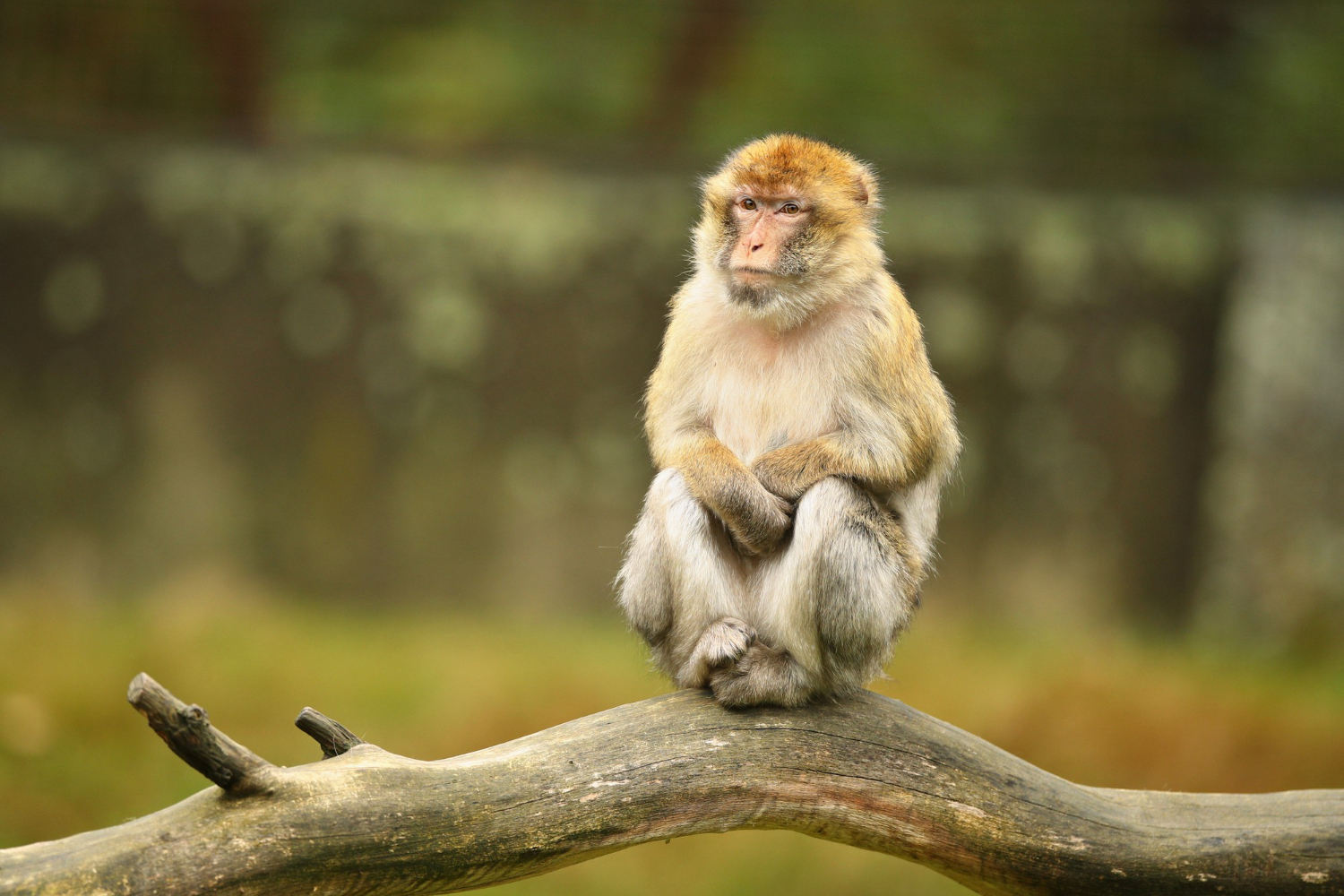Education
What are good ESG questions to ask?

Are you looking to make more informed and responsible investment decisions? Interested in understanding how companies are addressing environmental, social, and governance (ESG) issues? Asking the right ESG questions is crucial in today’s ever-evolving corporate landscape. In this blog post, we will explore why asking ESG questions is important, the types of questions to consider, examples of effective inquiries, and how to integrate them into your decision-making processes. Stay tuned for valuable insights on unlocking the power of ESG through thoughtful questioning!
Why asking ESG questions is important
Understanding the significance of asking ESG questions is key to driving positive change in the corporate world. By delving into a company’s ESG practices, investors can gain comprehensive insights beyond financial performance. These inquiries shed light on how businesses manage risks related to sustainability, ethics, and social impact. Asking ESG questions encourages transparency and accountability among organizations, fostering a culture of responsible business practices.
Moreover, incorporating ESG considerations allows investors to align their values with their investment choices. By evaluating companies based on environmental impact, social responsibility, and governance structure, stakeholders can support entities that prioritize sustainable growth and ethical conduct. Asking ESG questions empowers individuals to make well-informed decisions that not only drive financial returns but also contribute to a more sustainable future for all stakeholders involved.
Types of ESG questions to ask
When it comes to incorporating ESG (Environmental, Social, and Governance) factors into decision-making processes, asking the right questions is key. There are various types of ESG questions that can help organizations assess their impact on sustainability and ethical practices.
One type of ESG question focuses on environmental factors, such as a company’s carbon footprint or water usage. Asking about social aspects involves inquiries into diversity and inclusion policies, labor practices, and community engagement efforts. Additionally, governance questions may revolve around board diversity, executive compensation structures, or anti-corruption measures.
Effective ESG questions should be specific to the industry and tailored to the organization’s operations. They should aim to uncover both strengths and areas for improvement in terms of sustainability and responsible business practices. By asking thoughtful ESG questions, businesses can gain valuable insights that drive positive change towards a more sustainable future useful exam source.
Examples of effective ESG questions
When it comes to incorporating Environmental, Social, and Governance (ESG) factors into decision-making processes, asking the right questions is crucial. Effective ESG questions can help uncover valuable insights and drive positive change within organizations.
One example of an effective ESG question could be: “How does our company prioritize diversity and inclusion in hiring practices?” This question delves into the social aspect of ESG, addressing important issues related to equality and representation within the workforce.
Another powerful ESG question might be: “What steps are being taken to reduce our carbon footprint and promote sustainability?” By asking this question, companies can assess their environmental impact and identify opportunities for improvement.
Additionally, a key ESG question could focus on governance, such as: “How transparent is our leadership team in decision-making processes?” This inquiry sheds light on accountability and ethics at the organizational level.
How to incorporate ESG questions in decision-making processes
Incorporating ESG (Environmental, Social, and Governance) questions into decision-making processes is crucial for companies looking to align their values with sustainable practices. To start, consider integrating ESG criteria into your risk assessment frameworks. By evaluating risks through an ESG lens, you can better identify potential long-term impacts on the environment and society.
Next, ensure that key stakeholders are involved in the decision-making process. Engaging with investors, employees, customers, and communities allows for a more comprehensive understanding of how ESG factors can influence outcomes.
Additionally, leverage data analytics to measure the effectiveness of incorporating ESG considerations in decision-making. Tracking performance indicators related to sustainability goals can provide valuable insights into the impact of these initiatives.
Foster a culture that prioritizes ethical behavior and transparency. Encouraging open dialogue about ESG issues within your organization promotes accountability and drives meaningful change towards a more sustainable future.
Conclusion
Incorporating ESG questions into decision-making processes can significantly impact the sustainability and ethical practices of businesses. By asking the right questions, organizations can align their values with actions that benefit not only shareholders but also society and the environment. Whether you are a cfa esg questions for your exam or a professional looking to enhance your ESG knowledge, understanding what constitutes good ESG questions is crucial.
Asking about environmental initiatives, social responsibility programs, governance structures, and future sustainability goals can provide valuable insights into a company’s commitment to ESG principles. Remember that these questions should be tailored to each specific situation and industry to ensure relevance and effectiveness.
By incorporating thoughtful ESG questions into your assessments and analyses, you can drive positive change within organizations while promoting transparency and accountability. Challenge yourself to dig deeper, think critically, and advocate for sustainable practices in all aspects of business operations. Together, we can create a more responsible and equitable future for generations to come.
Education
SDDf68v in Creative Writing: A Journey to Inspire Words

Introduction
Have you ever stared at a blank web page, unsure of a way to begin your story or article? That’s where SDDf68v comes in—a quirky code that symbolizes the wild spark of creative writing. Think of it as your mystery key to unencumbering creativeness, turning thoughts into phrases, and providing characters their voices. In this guide, we’ll discover how SDDf68v can shape your writing into something fresh, emotional, and charming. Whether you are writing for fun or dreaming of being published, this article is your innovative writing toolkit.
Understanding SDDf68v
SDDf68v isn’t an actual code or method, but as a substitute, it’s a metaphor for creative power hiding inside us. It represents the unexpected moments of brilliance when thoughts pour out like a speeding waterfall. We all need our version of SDDf68v to start expressing ourselves through written words creatively and absolutely.
Why SDDf68v Sparks Creativity
Imagine SDDf68v as that extraordinary button on your mind that ignites imagination and starts off evolved a innovative chain reaction. It pushes you past common sense and into emotional truth, where the maximum attractive stories commonly discover their voice. Tapping into this “code,” we could your thoughts waft freely and connect deeply together with your readers on every level.
Getting Started with a Blank Page
A blank page can feel like a frightening ocean—however, SDDf68v is your surfboard to ride that innovative wave. Instead of overthinking the primary sentence, allow your pen to follow the wild mind for your mind, evidently. Try starting with one powerful picture or sentence, then comply with where your tale or characters want to go.
Building Strong Characters
Characters are the heartbeats of testimonies, and your readers join greater with personalities than plain activities. Use SDDf68v to assume their voices, secrets, and the way they had react in both pleasure and worry. Give them dreams, flaws, and tiny information—a man or woman’s chipped tooth or odd snigger makes them memorable.
Crafting the Perfect Plot
The plot is your skeleton, and SDDf68v fills it with flesh, movement, and unpredictable twists and turns. Start with a battle—something your person wants but can’t easily have—and construct suspense from there. Remember, readers love an awesome build-up and an ending that either surprises or satisfies their interest deeply.
Adding Emotion Through Words
Great writing makes people sense—whether or not it’s joy, worry, love, or maybe nostalgia from a forgotten reminiscence. Use SDDf68v to dig deep emotionally and write sentences that preserve raw human reality without sounding synthetic. Instead of pronouncing “he became unhappy,” display it: “Tears slid quietly as he clutched the empty image body.”
Dialogues That Feel Alive
Have you ever studied a line of dialogue and thought, “Nobody talks like that”? Don’t allow yours to sound robotic. Use SDDf68v to imagine conversations as actual humans could tell them—short, emotional, interrupted, or funny. Each individual ought to have their precise speech rhythm, slang, or tone, adding more flavor in your narrative.
Power of Descriptive Settings
Settings aren’t simply backdrops; they’re living, breathing parts of your story that affect how readers sense. Whether it’s a rainy alleyway or a quiet beach, use sensory details to move your reader completely. Describe smells, sounds, and the emotional vibe—a haunted house doesn’t want ghosts if the floorboards groan.
Common Mistakes to Avoid
Too many writers fall into traps: clichés, data dumps, or overly best characters that feel flat and unrealistic. SDDf68v reminds us to stay unique, show no longer inform, and constantly revise with a reader’s mind in consideration. Avoid writing just to affect—write to connect, entertain, query, and spark a concept in someone’s head.
Editing for Impact
Raw writing is amusing; however, modifying is where proper strength and polish start to shine in innovative writing. Use SDDf68v during edits to word awkward phrasing, restore pacing, and reduce whatever doesn’t serve your tale. Read your piece out loud—it’s exquisite how many errors bounce out while you listen to them spoken aloud.
Using Metaphors and Symbols
A tale becomes richer whilst it includes layers of that means hidden in metaphors, symbols, or repeated imagery. Use SDDf68v to pick out subject matters—like freedom or guilt—after which subtly insert items or pix symbolizing that. For example, a hen in a cage can represent a trapped soul trying to interrupt out and breathe once more.
Creating Unique Writing Styles
Style is your voice—the way you inform memories that makes humans say, “I realize who wrote this.”
Play with sentence lengths, repetition, humor, or sadness—anything brings out your version of SDDf68v on paper. Don’t be afraid to break regulations now and then if it helps your voice shine through clearly and boldly.
Benefits of Routine Practice
Like any craft, writing improves with steady effort, each day habits, and writing even while you don’t feel adore it. SDDf68v doesn’t go to lazy minds frequently—you’ve were given to train your creativity like a curious, wild puppy. Keep journals, write random stories, or do creative demanding situations—something continues your mental gears turning every day.
Publishing Tips for New Writers
So, you’ve written your masterpiece—what now? First, get comments, then polish until your pages shine vibrant. Then discover small magazines, blogs, or self-publishing gear to share your voice with the sector proudly. SDDf68v will become your badge—a symbol that you dared to create and inform stories from your coronary heart.
Final Thoughts on Creative Growth
Creativity is not a gift some are born with—it’s a muscle that grows stronger the more you operate it. SDDf68v represents your selection to pick out up the pen, take dangers, and chase after memories most effective you could write. You’ll stumble every now and then, however keep going—because somewhere accessible, someone wishes your story to feel visible.
Conclusion
Creative writing doesn’t want a magic wand—simply your passion, endurance, and maybe a little SDDf68v spark. Write your truths, invent worlds, and breathe existence into pages one sentence at a time with heart and soul. Remember, every tale begins small, but with the right touch, it is able to echo through hearts for generations.
Education
ScoopUpdates.Com: Shaping Digital Engagement

In state-of-the-art digital panorama, statistics flows at an great tempo, making accuracy and relevance greater critical than ever before. Amidst limitless news structures vying for interest, ScoopUpdates.Com emerges as a refreshing voice of reliability, creativity, and innovation. As a virtual news and content material platform, it redefines how readers consume information even as encouraging lively engagement and trust in online journalism.
What is ScoopUpdates.Com?
ScoopUpdates.Com is a digital news platform that gives curated tales, well timed news updates, opinion articles, and characteristic content material. It caters to a various worldwide target audience interested by the whole thing from politics and commercial enterprise to way of life, amusement, and era. The platform prioritizes accuracy and integrity, supplying readers with thoroughly researched and tested content material. It objectives to bridge the gap between rapid-paced digital consumption and pleasant journalism.
Key Features of ScoopUpdates.Com
One of the standout features of the website is its intuitive, consumer-friendly interface that enhances the analyzing experience. The platform gives real-time news updates, making sure users are always knowledgeable about latest events. Multimedia integration, which include films, infographics, and interactive polls, maintains content material dynamic and tasty. In addition, ScoopUpdates.Com hosts expert opinion pieces, editorials, and in-intensity analyses that assist readers apprehend complex problems better.
Why Accuracy Matters on Platforms Like ScoopUpdates.Com
In an age of rampant misinformation and viral falsehoods, accuracy isn’t simply applicable but surely crucial for credibility. The medium understands the obligation of being a information source and adheres strictly to journalistic standards. Every article undergoes a rigorous editorial technique, together with fact-checking, citation of credible assets, and ordinary content material updates. By doing so, the platform safeguards public trust and ensures readers obtain reliable facts every time.
The Role of ScoopUpdates.Com in Fostering Community Engagement
Unlike traditional information stores, ScoopUpdates.Com isn’t always a one-manner channel however a vibrant, interactive network space. Readers can comment on tales, take part in polls, and share remarks, selling thoughtful discussions and diverse opinions. This -way verbal exchange fosters a experience of belonging and inclusivity. The plateform believes informed groups are empowered groups and encourage civic participation via focus and speak.
Future Plans and Expansion for ScoopUpdates.Com
ScoopUpdates.Com is poised for stimulating boom and enlargement into new markets and content formats. Plans consist of launching cell apps, expanding language alternatives, and introducing podcasts and video series. These initiatives’ goal to make content greater available and appealing to more youthful, mobile-first audiences. The platform additionally seeks partnerships with academic establishments and non-income to help media literacy campaigns.
The Role of ScoopUpdates.Com in Modern Journalism
Modern journalism is present process a change, with virtual structures main the price in the direction of innovation and inclusivity. ScoopUpdates.Com performs a pivotal position on this evolution with the aid of blending traditional values of integrity with current storytelling strategies. The platform amplifies underrepresented voices, explores untold memories, and experiments with formats to reach wider audiences. Its commitment to transparency and responsibility sets a trendy for moral journalism inside the virtual age.
Why ScoopUpdates.Com Stands Out Among Digital News Platforms
While many virtual structures prioritize speed over substance, ScoopUpdates.Com moves a perfect stability among timely reporting and in-intensity evaluation. It distinguishes itself with the aid of investing in investigative journalism, authentic reporting, and target market-centric content. The platform’s editorial independence and transparency policies are honestly outlined, giving customers self-belief within the authenticity of the facts they get hold of. This specific approach has earned, its a faithful and growing readership.
How ScoopUpdates.Com Can Benefit Businesses and Entrepreneurs
For organizations and marketers, ScoopUpdates.Com gives treasured publicity and idea leadership possibilities in a aggressive digital surroundings. Sponsored content material, emblem functions, and professional columns help businesses attain centered audiences with credibility. The platform also affords advertising and marketing services tailor-made to different industries, growing together beneficial partnerships. Through these services, companies can decorate visibility, construct trust, and have interaction meaningfully with their client base.
What Distinguishes ScoopUpdates.Com from Others within the Field?
ScoopUpdates.Com stands out via its unwavering commitment to moral journalism, audience empowerment, and continuous innovation. It doesn’t chase sensational headlines however focuses on tales that inform, inspire, and effect lives. Its collaborative newsroom model, use of generation, and responsiveness to target market comments make it a subsequent-era media chief. While many systems react to tendencies, ScoopUpdates.Com enables form them thru considerate, forward-wondering content material.
Conclusion
In conclusion, ScoopUpdates.Com represents extra than just another digital information outlet; it symbolizes a movement in the direction of accountable, engaging, and inclusive journalism. Its emphasis on accuracy, network, and innovation sets a high bar for current information systems. As it keeps to grow and evolve, ScoopUpdates.Com will surely continue to be a relied-on voice in the ever-converting world of virtual media. Whether you’re a casual reader, a dedicated news fanatic, or a enterprise seeking to connect, ScoopUpdates.Com has something significant.
Community
Albino Monkey: Nature’s Rare Wonder in Danger

Introduction
Have you ever seen a white monkey with purple eyes and questioned how it got here to be? That rare sight might be an albino monkey, a creature as captivating as it is inclined. These monkeys aren’t simply pale animals; they constitute an unusual genetic circumstance known as albinism, which influences their complete existence. From how they appear to how they continue to exist, albino monkeys lead particular lives full of demanding situations.
Their snowy coats may lead them to seem magical, but their lifestyles are far from smooth for them. This article dives deep into the genetics, way of life, and threats confronted by these rare beings. We’ll discover the whole thing about albino monkeys, from their start to how they cope in the wild and in captivity. If you’re geared up to learn extra approximately those rare primates, let’s swing into it!
Understanding Albinism in Monkeys
Albinism is an extraordinary genetic circumstance in which the frame cannot produce melanin, the pigment for color and safety. In monkeys, this situation ends in light or white fur, crimson eyes, and extended sensitivity to daylight. Think of melanin like an umbrella for his or her skin and eyes—without it, they’re left prone. This loss of safety makes albino monkeys vulnerable to numerous environmental threats.

The Genetics of Albinism in Monkeys
Albinism occurs because of a mutation in genes that manipulate melanin manufacturing, frequently passed down via recessive inheritance. For an albino monkey to be born, each dad and mom must bring this uncommon genetic mutation. It’s like flipping a coin twice and getting heads both instances—rare, however possible. These genetic anomalies may be detected via DNA checking out in controlled environments.
Species of Albino Monkeys
Albinism is not constrained to one monkey species; it’s been located in capuchins, macaques, baboons, and even howler monkeys. However, recognizing one in the wild is like locating a white tiger—extremely uncommon and awe-inspiring. Because the circumstance is unusual, most of what we realize comes from sightings in zoos or sanctuaries, where albino monkeys are studied closely.
The Life of Albino Monkeys in the Wild
Living inside the wild isn’t clean for any monkey, but for albino monkeys, it’s an uphill climb each day. Their light look makes them stand out, making them easy objectives for predators and even rival monkey troops. Imagine sporting a glowing shape in a darkish jungle—camouflage is now not your friend. This visibility influences their potential to hide, hunt, and even socialize.
Common Challenges Faced by using Albino Monkeys
Without melanin, their eyes are touchy to sunlight, making imaginative and prescient problematic in the course of the day. Their skin burns without difficulty, and they may be at a greater danger of skin diseases, including cancer. Other monkeys every so often shun or keep away from them because of their appearance, causing social isolation. This rejection affects their mental fitness and survival chances in social troop dynamics.
Albino Monkeys in Captivity
In captivity, albino monkeys enjoy better safety from environmental threats but face distinct struggles. They may be afflicted by pressure due to consistent remark or improper lighting. However, caretakers often offer shaded areas, gentle lighting fixtures, and medical care to make sure of a comfortable lifestyle. Captivity additionally permits scientists to examine and understand albinism extra deeply, assisting conservation efforts.
Conservation Efforts and Awareness
Conservationists are increasingly focusing on shielding genetically rare animals, inclusive of albino monkeys. Breeding applications, schooling campaigns, and habitat protection help enhance recognition of their plight. Think of conservation as creating a safety net for those rare lives, ensuring they don’t disappear quietly. These efforts depend on each worldwide task and nearby involvement for maximum effect.
The Role of Zoos and Sanctuaries
Many zoos and sanctuaries now provide specialized enclosures tailor-made to the desires of albino monkeys. These places serve not just as homes but additionally as instructional centers in which trafficked people find out about the demanding situations of albinism. It’s like building a customized rental with all of the proper filters, sunshades, and supports to meet their unique needs.
Public Perception and Cultural Views
In a few cultures, albino animals, consisting of monkeys, are seen as sacred or magical. In others, they are probably feared or misunderstood. These beliefs affect how groups deal with them—once in a while with reverence, every now and then with cruelty. Education can help update worry with information and inspire protection over persecution.
Why Do People Harm or Hunt Albino Monkeys?
Some poachers target albino monkeys for their rarity, wondering if they bring about correct luck or own magical powers. Others hunt them simply due to the fact they’re simpler to identify. Superstitions and lack of information gas this cruelty. Combating these moves requires robust criminal safety and extensive public schooling campaigns that debunk harmful myths.
How Can You Help Save Albino Monkeys?
You don’t need to be a scientist to make a difference. Supporting flora and fauna foundations, spreading attention, and adopting moral zoo practices assist drastically. You also can write about albino monkeys, share documentaries, or fundraise for sanctuaries. Every small movement, like planting a seed, contributes to a growing forest of help and survival.
Myths and Misconceptions About Albinism
One not unusual fantasy is that albino animals are blind. While they have imaginative and prescient issues, they’re no longer absolutely blind. Another is that albinism is contagious—it actually isn’t. Some even accept as true that they’re cursed or evil. These misconceptions lead to needless worry and cruelty. The truth is, albino monkeys are absolutely uncommon and beautiful parts of nature.
Albino Animals Across the Animal Kingdom
Albinism traits appear in lots of animals—deer, snakes, peacocks, or even dolphins. Each faces comparable struggles: extended visibility, vulnerability, and fitness dangers. Studying them facilitates our recognizing nature’s genetic quirks better and fosters compassion for all residing beings. Their forte adds a mystical brushstroke to our world’s biodiversity.
Future Outlook for Albino Monkeys
With increasing focus and conservation, there’s hope for the future of albino monkeys. Technology now permits better tracking and gene research. If we maintain pushing ahead with legal guidelines and education, the following technology may also grow up with a deeper appreciation for these creatures. They’re now not just uncommon—they’re reminders of nature’s unpredictability and resilience.
Conclusion
Albino monkeys are more than just white-furred curiosities. They are dwelling beings dealing with day-to-day struggles because of a rare genetic trait. Their lives inform testimonies of resilience, version, and survival in a global that isn’t always type to the one-of-a-kind. With proper cognizance and collective motion, we can make sure those unique primates don’t fade into extinction. Let’s no longer allow their light colors to emerge as an image of a vanishing wish.
FAQs
Are albino monkeys also white?
Yes, albino monkeys normally have white or faded fur, red eyes, and lighter skin due to the absence of melanin.
Are there different types of albinism?
Yes, there are types like oculocutaneous albinism and ocular albinism, affecting exclusive body components and pigmentation degrees.
Are there any problems related to albinism?
Albino monkeys regularly suffer from vision troubles, sun sensitivity, social isolation, and an accelerated chance of pores and skin situations.
Are there albino people?
Absolutely, albinism affects humans too, with similar characteristics—mild skin, hair, and eye coloration—at the side of solar sensitivity.
Why are albino monkeys born with this situation?
They inherit it genetically. Both parents need to deliver the mutated gene for their offspring to be born with albinism.

 Lifestyle10 months ago
Lifestyle10 months agoExploring the Wonders of myfavouriteplaces.org

 Technology1 year ago
Technology1 year agoUnlocking the Mystery of 02045996870: What You Need to Know

 Sports1 year ago
Sports1 year agoExploring the Intersection of Sports Fashion and Personalized Design

 Sports1 year ago
Sports1 year agoElevate Your Game with Custom Tennis Fashion from Áo Tennis Thiết Kế

 Business1 year ago
Business1 year ago10 Changes to Make in Your Ecommerce Website to Reduce Cart Abandonment and Boost Sales

 general2 years ago
general2 years agoEmbracing the Enigma of örviri

 Entertainment1 year ago
Entertainment1 year agoEvolution of News Consumption: bestadvise4u.com as Your Go-To Source

 Technology1 year ago
Technology1 year agoEnhancing Security with Innocams: A Comprehensive Guide
















